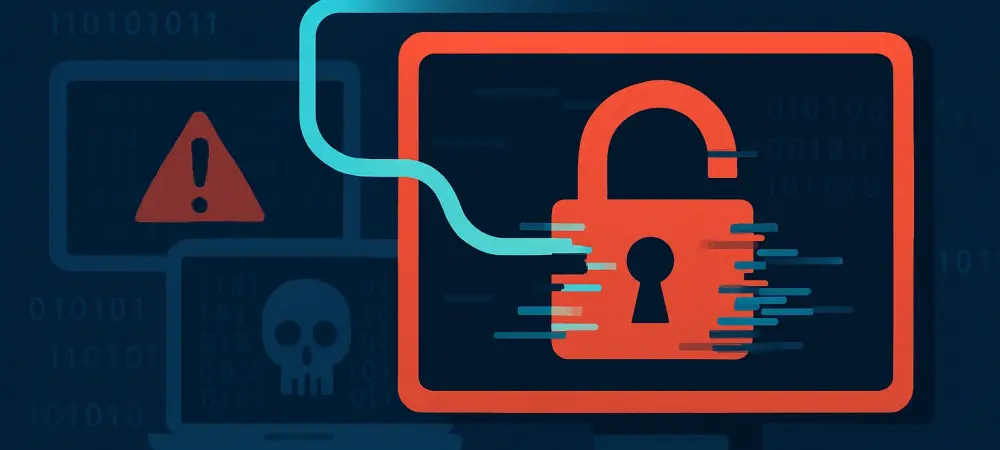Diving into the world of cybersecurity, I’m thrilled to sit down with Dominic Jainy, a seasoned IT professional whose expertise spans artificial intelligence, machine learning, and blockchain. With a keen eye for how these technologies intersect with security across industries, Dominic offers invaluable insights into the recent critical vulnerabilities uncovered in Wondershare RepairIt, as well as broader risks in AI and software supply chains. In this conversation, we explore the specifics of authentication flaws, the dangers of exposed user data and AI models, and the evolving threats in the digital landscape.
How did the authentication bypass vulnerabilities in Wondershare RepairIt, specifically CVE-2025-10643 and CVE-2025-10644, come to light, and what makes them so severe?
These vulnerabilities were identified by cybersecurity researchers who noticed critical flaws in how the app handles permissions for storage account tokens and SAS tokens. CVE-2025-10643, with a CVSS score of 9.1, and CVE-2025-10644, scoring even higher at 9.4, are essentially backdoors that allow attackers to sidestep authentication protections. What makes them so severe is that they grant unauthorized access to sensitive systems, potentially letting attackers manipulate data or execute harmful code on users’ devices. It’s a glaring oversight in basic security design that could have catastrophic consequences if exploited.
Can you break down how an attacker might exploit these flaws to impact users or the broader system?
Absolutely. By exploiting these authentication bypass issues, an attacker could gain full read and write access to the cloud storage linked to the app. This means they could steal personal user data like uploaded images or videos, tamper with stored AI models, or even alter software updates that get pushed to users. Beyond that, it opens the door to supply chain attacks, where malicious code embedded in updates could spread to countless endpoints, infecting legitimate users without them ever knowing. It’s a cascading risk that starts with one flaw but can affect an entire ecosystem.
What specific development mistakes were flagged in the app that led to private user data being exposed?
The researchers pointed out some pretty fundamental errors in the app’s development practices. For one, the developers embedded cloud access tokens directly into the app’s code with overly permissive settings, basically handing attackers the keys to the storage vault. On top of that, the data stored in the cloud wasn’t encrypted, so even if someone got in, there was no secondary barrier to stop them from accessing or modifying sensitive files. These aren’t just minor oversights; they’re basic lapses in security hygiene that contradict any reasonable privacy policy.
Beyond user data, what other critical assets were left vulnerable in the exposed cloud storage, and why should we be concerned?
The cloud storage wasn’t just holding user files; it also contained AI models, software binaries, container images, scripts, and even company source code. This is a goldmine for attackers. If they tamper with AI models or executables, they could inject malicious payloads that get distributed through legitimate updates. Imagine an AI model altered to behave normally until a specific trigger activates malicious behavior—users wouldn’t suspect a thing. This kind of tampering could erode trust, steal intellectual property, or worse, compromise entire networks of downstream customers.
With no response from the vendor since the issues were reported in April 2025, what does this silence signal to you about the risks users face?
Honestly, it’s troubling. When a vendor doesn’t acknowledge or address critical vulnerabilities after months, it suggests either a lack of resources or a disregard for user safety. For users, this means they’re left in the dark, running software that’s known to be vulnerable. It’s a risky position because attackers could already be exploiting these flaws quietly. Without a patch or even a statement, users have to assume the worst and take protective measures on their own, which isn’t always feasible for everyone.
Shifting to broader AI security concerns, can you explain what Model Context Protocol (MCP) servers are and why they’ve become a target for attackers?
MCP servers are essentially gateways that connect AI systems to various data sources like databases, cloud services, or internal APIs. They’re critical for enabling AI tools to function with real-time context. However, they’ve become targets because many are deployed without proper authentication. This means anyone with the right know-how can access them, potentially exposing sensitive data like trade secrets or customer records. It’s like leaving your front door unlocked in a busy neighborhood—eventually, someone’s going to walk in.
How do exposed container registries add another layer of risk to AI systems, and what could happen if they’re compromised?
Container registries store Docker images, which often include AI models or critical software components. When these registries are exposed without security controls, attackers can pull those images, modify the models inside—say, by tweaking parameters to skew predictions or embed malicious code—and then push the altered images back. The tampered model might act normal during testing but flip to malicious behavior under specific conditions. This kind of subtle attack is incredibly dangerous because it can bypass standard security checks and infect systems at scale.
What is your forecast for the future of AI security as these technologies become more integrated into everyday tools and enterprise systems?
I think we’re at a tipping point. As AI becomes more embedded in everything from personal apps to corporate infrastructure, the attack surface is only going to grow. We’ll likely see more sophisticated threats like indirect prompt injections or tool poisoning, where attackers manipulate AI behavior in ways that are hard to detect. On the flip side, I expect a push for stronger security standards—think mandatory authentication for MCP servers or encrypted model storage. But it’ll be a race between innovation and defense, and if vendors keep prioritizing speed over safety, we’re in for some rough patches ahead.

